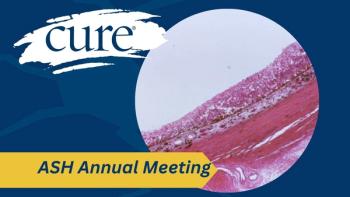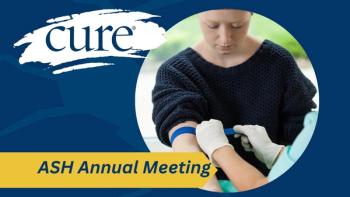
One Survivor Helps Others Find Their ‘Cancer Love Story’
After receiving supportive care during her college cancer journey, this survivor now works to guide other patients through their treatments.
Lauren Shea was only 20 years old when she was diagnosed with Hodgkin’s lymphoma. The diagnosis, which came during her college education at UCLA, was a huge stressor that left her feeling somewhat isolated from other patients and survivors due to her age.
Shea recalled, “As a young adult with cancer — and I've (since) heard this from a lot of young adult cancer patients as well — you look to your left and you look to your right when you're going to your appointments or your treatments, and you think to yourself: ‘am I the only one in my 20s that's going through this?’”
Even though Shea felt somewhat alone among other patients with cancer, she described the smaller things that people in her existing social circle did that had a big impact on managing both treatments and classes.
“When I was in cancer, (my good friend) came over and made Chai every Wednesday morning at 8am before my 9am class. And it was the consistency of him listening to what I needed, but also just being there, holding that space. That was everything to me.”
In addition to the attention she received from friends and loved ones, Shea emphasized how meaningful the experience of supportive care, defined by the National Cancer Institute as care that “includes physical, psychological, social and spiritual support for patients and their families,” was to her treatment as well as her future career.
“I received psychosocial care, whether it was through my social workers support groups or going to adventure camps, and I realized how much that mattered. I realized when I was a patient, that I may have been in the ‘chemo seat’ then, but I remember thinking to myself: ‘one day, I want to be in the seat of serving psychosocial needs for cancer patients and their families.’ So that led (me) to getting my master's in public health and my master's in social work, which led me to my internship at City of Hope and introduced me to the department of supportive care medicine.”
Now a full-time social worker specializing in psychosocial cancer care for single patients with cancer, Shea explained that
While dating or finding a partner may not be the first concern for patients in active treatment, Shea says investing in a cancer “love story,” whether that love is in a traditionally romantic way, can make all the difference.
“I do see love stories in a more unromantic sense, I see love stories between a mom and a daughter. I was just talking to a patient who shared, ‘I met this person three years ago at a dog store, a pet shop, and we bonded of how cute our dogs were.’ And now, three years later, this is her primary advocate. She's going to all the appointments, when the patient's inpatient, she's there. I think I see love stories every day.”
When we asked her how patients can seek out new love stories after diagnosis, Shea suggested seeking out traditional mental health care or a psychosocial specialist to manage treatment-related loneliness, as well as the benefits of connecting with other patients and survivors.
“One way we say that you can find these supportive figures is through peer support. There is nothing like talking to someone when you're going through cancer, for them to say, ‘I get it, I get what you're going through. It may not be the exact same situation, but I understand.’ I hear so many of my patients say when they talk to a peer who has cancer that can be the greatest comfort. So that's one thing, getting connected to a support group at their local hospital.”
For more news on cancer updates, research and education, don’t forget to





